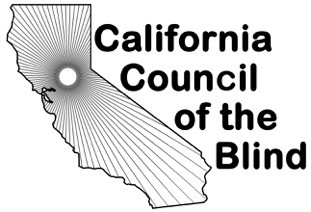Bonnie Rennie
Imagine you're an active senior citizen looking forward to enjoying the fruits of your labor. But now you find yourself on a terrifying journey: the loss
of some or all of the eyesight you've depended on all of your life. What do you do! How do you cope with the emotional and practical aspects of life beyond
loss?
Enter the new e-book, written by the California Council of the Blind's Seniors with Vision Loss Committee. The book's self-explanatory title is "How to
Have a Happy Life: As a Senior Losing or Without Vision." The committee's goals are to encourage and empower seniors who are blind or who have low vision.
We also seek to educate their families, friends, and the public regarding our concerns and capabilities. We've found that one way to spread our positive
message is through the creation and distribution of literature. Note our previous publication, "Failing Sight and the Family Plight."
In "How to Have a Happy Life...," a woman tells her story of vision loss in terms that our target audience can likely relate to. Our narrator was fully
sighted, a rather feisty grandmother, active in her community. She takes readers through her initial fears and struggles; then describes her happier ending.
She achieves constructive attitudes, needed skills, community integration, and acceptance of her new visual status. Her message is that others who want
to, and who make the effort, can too.
The book emphasizes that such success is usually a long, uneven process, touching on such issues as grief after a loss, relationships with one's partner
and wider circle, overcoming attitudinal barriers. In order to heighten the impact of these points, the book contains illustrations. Our narrator acknowledges
that there are many ways to respond to vision loss, and numerous factors come into play. Fortunately our heroine has many friends whose vignettes provide
several clear examples of the diversity of coping styles. These peers highlight such differences as whether or not they desire to acquire and use independent
living skills.
This book, written from the perspective of a legally blind peer, can be used in a variety of ways. It was primarily intended to be read by seniors, their
families and friends, ideally together, providing a springboard for positive discussion. The story lends itself to conversations in support groups for
those with visual impairments. The Council could potentially offer seminars or structured conference calls based on going through, and helping participants
digest and benefit from, the material presented.
"How to Have a Happy Life..." can be downloaded and/or printed (70 pages including wonderful graphics) from our CCB website, www.ccbnet.org. The new publication,
as well as "Failing Sight..." can be reached by going to the home page, and clicking on the Resources link. Funding and opportunity permitting, we would
like to someday produce audio CD, large print, and other formats. Many newly visually impaired seniors have not yet gained sufficient computer skills to
go online and read the document independently.
We hope that our CCB members will first read, and then help us get the word out about this new resource. Perhaps individuals or chapters would distribute
the flyer promoting the book, also found on our website's Resources page. Those who've been blind or had low vision for all or most of their lives may
not relate to the entire experience of the woman portrayed in this publication. But then, it was not written for those of us who are "pros" at this "legal
blindness thing." We who are comfortable on and familiar with this road can help those new on the road to find their way.


